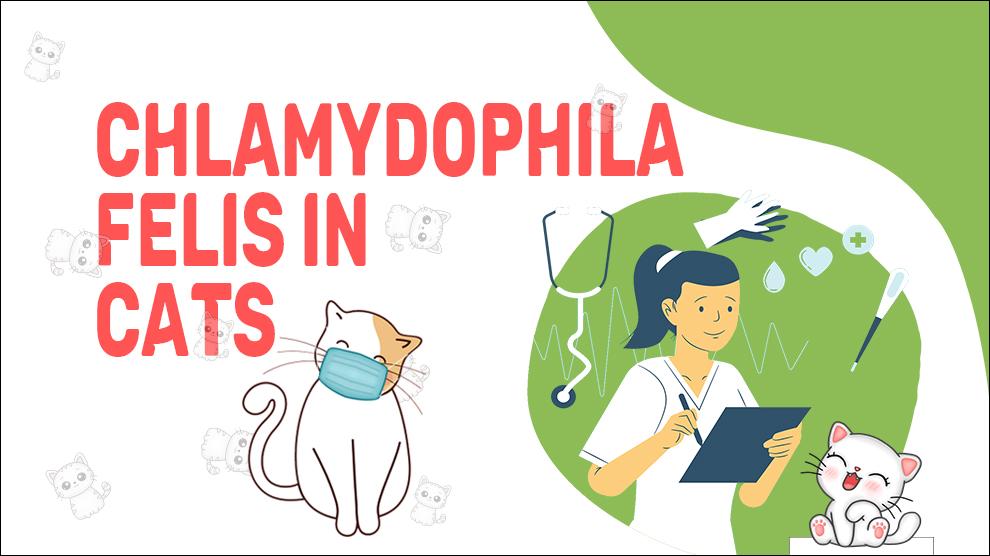What Is Chlamydophila Felis?
Chlamydophila Felis is a bacterial infection that affects the respiratory tract of cats.
The bacterium is transmitted through direct contact with infected cats or through contact with contaminated surfaces such as bedding, food dishes, or litter boxes.
The disease is more common in multi-cat households and in cats that are housed in crowded or stressful environments such as shelters or catteries.
Clinical Signs Of Chlamydophila Felis
The symptoms of Chlamydophila Felis can vary depending on the severity of the infection.
Some cats may be asymptomatic, while others may display the following symptoms:
- Sneezing
- Watery or discharge from the eyes
- Conjunctivitis
- Nasal discharge
- Fever
- Loss of appetite
- Lethargy
- Swelling In Eyes
- Redness In Eyes
- Pawing At Eyes
- Swollen Eyelid
- Red Eyelids
- Eyelids Partly Closed
Symptoms typically appear 5-10 days after exposure to the bacterium.
Treatment Options For Chlamydophila Felis
The treatment for Chlamydophila Felis typically involves a course of antibiotics to eliminate the bacterial infection.
The most commonly prescribed antibiotics for this condition are doxycycline and azithromycin.
In severe cases, hospitalization and supportive care such as intravenous fluids may be necessary.
In addition to antibiotics, symptomatic treatment may also be recommended to help alleviate the cat's symptoms.
This may include eye drops or ointments to treat conjunctivitis, as well as supportive care such as steam therapy or humidifiers to help alleviate nasal congestion.
Home Remedies For Chlamydophila Felis
While there are no home remedies that can cure Chlamydophila Felis, there are some steps that cat owners can take to help alleviate their cat's symptoms.
These include:
- Steam Therapy: Steam therapy can help alleviate nasal congestion and make it easier for your cat to breathe. You can create steam by running a hot shower and bringing your cat into the bathroom for a few minutes.
- Humidifiers: Humidifiers can also help alleviate nasal congestion by increasing the moisture in the air. Be sure to clean the humidifier regularly to prevent the growth of bacteria and mold.
- Eye Drops or Ointments: If your cat is experiencing conjunctivitis, your veterinarian may prescribe eye drops or ointments to help alleviate the inflammation and discharge.
How To Prevent Chlamydophila Felis?
Preventing the spread of Chlamydophila Felis can be challenging, but there are some steps that cat owners can take to reduce the risk of infection.
These include:
- Vaccination: Vaccination is the best way to prevent Chlamydophila Felis infection in cats. The vaccine is typically given to kittens as part of their regular vaccination schedule and is recommended for cats that are at high risk of infection.
- Hygiene: Keeping your cat's environment clean and hygienic can help reduce the risk of infection. This includes regularly cleaning litter boxes, food dishes, and bedding.
- Isolation: If you have a cat that has been diagnosed with Chlamydophila Felis, it is important to isolate them from other cats to prevent the spread of infection.
Affected Cat Breeds Of Chlamydophila Felis
Chlamydophila Felis can affect cats of all breeds and ages.
However, the disease is more common in multi-cat households and in cats that are housed in crowded or stressful environments such as shelters or catteries.
Causes For Chlamydophila Felis
Causes:
Chlamydophila Felis is caused by the Chlamydophila Felis bacterium.
The bacterium is transmitted through direct contact with infected cats or through contact with contaminated surfaces such as bedding, food dishes, or litter boxes.
The disease is more common in multi-cat households and in cats that are housed in crowded or stressful environments such as shelters or catteries.
When To See A Vet For Chlamydophila Felis?
If you suspect that your cat may have Chlamydophila Felis, it is important to see a veterinarian as soon as possible.
The earlier the infection is diagnosed and treated, the better the chances of a successful recovery.
In addition, if your cat is displaying any of the symptoms of Chlamydophila Felis, such as sneezing, coughing, watery eyes, or nasal discharge, it is important to seek veterinary care promptly.
Your veterinarian will perform a physical examination of your cat and may recommend diagnostic tests such as blood work or culture of the nasal discharge to confirm the diagnosis.
Once a diagnosis is made, your veterinarian will recommend a course of treatment that may include antibiotics and supportive care.
Food Suggestions For Chlamydophila Felis
While there are no specific dietary recommendations for cats with Chlamydophila Felis, it is important to ensure that your cat is eating a balanced and nutritious diet.
Good quality cat food can help boost your cat's immune system and promote overall health.
Be sure to provide fresh water at all times and monitor your cat's appetite, as a loss of appetite can be a sign of illness.
Conclusion
Chlamydophila Felis is a bacterial infection that affects the respiratory system of cats.
While the disease is generally not life-threatening, it can cause discomfort and lead to more serious health problems if left untreated.
The disease is more common in multi-cat households and in cats that are housed in crowded or stressful environments such as shelters or catteries.
If you suspect that your cat may have Chlamydophila Felis, it is important to see a veterinarian as soon as possible.
The earlier the infection is diagnosed and treated, the better the chances of a successful recovery.
Preventing the spread of Chlamydophila Felis can be challenging, but there are some steps that cat owners can take to reduce the risk of infection, including vaccination, hygiene, and isolation.











